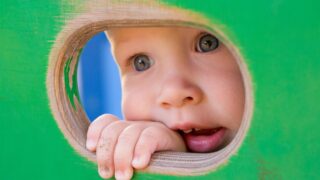Craniosynostosis: A Mom’s Journey of Love and Learning
Being a mother comes with its own set of challenges and joys, but when faced with a rare condition like craniosynostosis, the journey can be overwhelming. One mother, Sarah, shares her story of love and learning as she navigates through her son’s diagnosis and treatment.
When Sarah’s son, Liam, was born, she noticed that his head shape was slightly different from other babies. After consulting with their pediatrician, they were referred to a craniofacial specialist who diagnosed Liam with craniosynostosis, a condition where the bones in a baby’s skull fuse together too early, causing problems with brain growth and head shape.
Initially, Sarah was terrified and confused. She had never heard of craniosynostosis before and was uncertain about what the future held for her son. However, through extensive research and reaching out to support groups, Sarah learned that early detection and intervention could greatly improve Liam’s prognosis.
As Liam underwent surgery to correct the fusion of his skull bones, Sarah found herself immersed in a world of medical jargon and complex procedures. However, she was determined to be her son’s strongest advocate and support system. She found solace in connecting with other parents going through similar experiences and sought guidance from experienced medical professionals.
Throughout the process, Sarah realized the importance of being open and honest with her friends and family about Liam’s condition. She found that their support and understanding made a world of difference, helping her stay positive and strong for her son.
After the surgery, Sarah and Liam embarked on a journey of recovery and rehabilitation. Despite the hardships, Sarah was amazed by her son’s resilience and unwavering spirit. She cherished every milestone and celebrated each small victory, knowing that they were one step closer to a normal, healthy life for Liam.
Today, Liam is a happy and thriving young boy. His head shape has improved, and he has surpassed all developmental milestones. Sarah continues to raise awareness about craniosynostosis, advocating for early detection and intervention in order to give other children the best possible outcome.
Conclusion
Sarah’s journey with her son’s craniosynostosis has been filled with challenges and triumphs. Through love, determination, and a strong support system, she was able to navigate through the uncertainties and provide the best possible care for Liam. Her story serves as a beacon of hope for other parents facing similar struggles, reminding them that they are not alone and that there is always room for growth and healing.
FAQ
What are the symptoms of craniosynostosis?
Craniosynostosis may be noticeable as an abnormal head shape, with the skull appearing misshapen or asymmetrical. Some children may also experience developmental delays or increased pressure within the skull.
How is craniosynostosis treated?
Treatment for craniosynostosis typically involves surgery to separate the fused skull bones and allow for normal brain growth. In some cases, additional surgeries or therapies may be needed to address associated issues such as facial asymmetry or developmental delays.
What is the long-term prognosis for children with craniosynostosis?
With early detection and intervention, the prognosis for children with craniosynostosis is generally positive. Many children go on to lead healthy, normal lives after receiving appropriate treatment.
[ad_2]














コメント